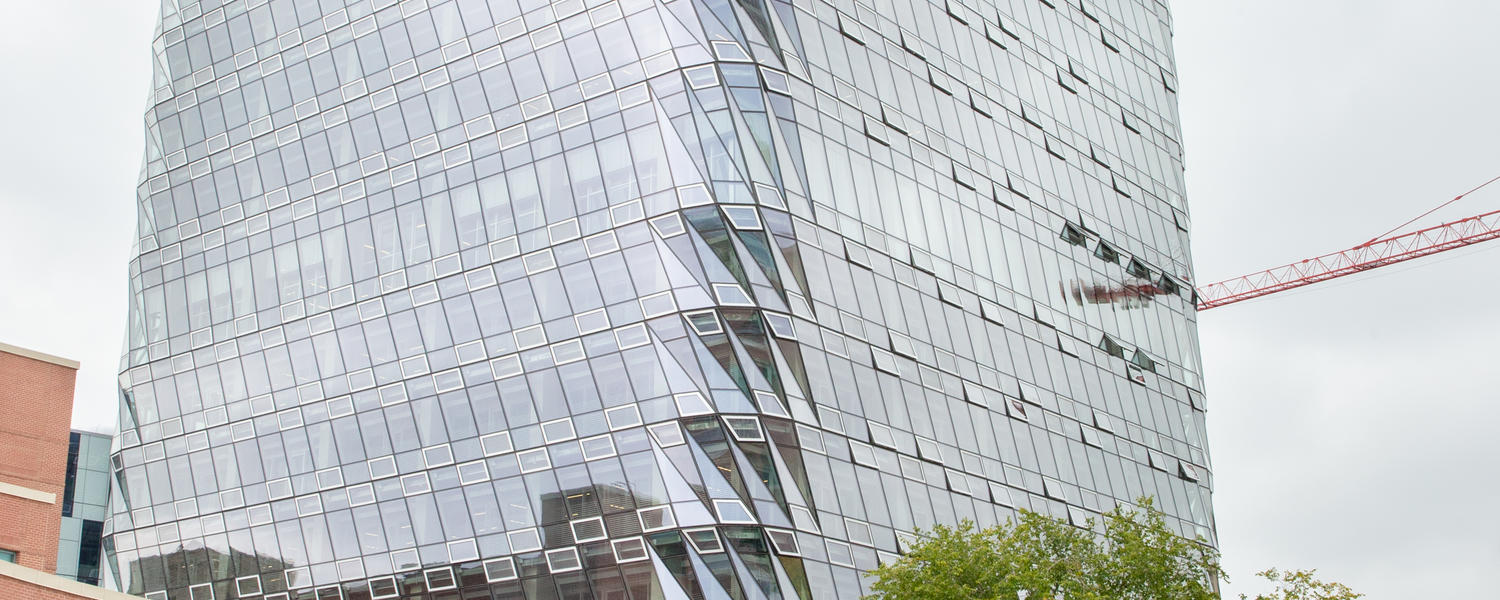
Life Cycle Assessment of MacKimmie Complex
Overview:
Rising anthropogenic carbon dioxide (CO2) levels and other greenhouse gases (GHGs) contribute to climate change, affecting many countries in various continents. Extreme weather changes regionally and globally have hit record highs. The building sector contributes to approximately 40% of global GHG emissions and 13% of Canada's total GHG emissions. It is crucial to develop strategies aimed at reducing buildings' carbon footprint to help Canada in its pledge to achieve net-zero by 2050.
UCalgary student Vaidehi Pitre, gained valuable insights on his project by working under the supervision of Dr. Joule Bergeron, Associate Professor at the Department of Chemical and Petroleum Engineering, Adam Stoker and Rachelle Haddock from the Office of Sustainability, Ian Washbrook and Emily King from Entutitve and Joanna Chen from UCalgary’s architectural team. Pitre’s project aims to conduct a life cycle assessment of the MacKimmie Complex to quantify the reduction in the life cycle impacts compared to a baseline building in support of the MacKimmie redevelopment project LEED certification.
The scope of this project encompasses research towards four of the United Nations’ Sustainable Development Goals (SDGs), goal 9 — industry, innovation and infrastructure; goal 11 — sustainable cities and communities; goal 12 — responsible consumption and production; and goal 13 — climate action.
Outcomes:
Life cycle assessment is a decision-making tool used to assess the environmental impacts of a product, process or service throughout its life cycle. It is designed to help decision-makers make economically beneficial and environmentally conscious decisions. The scope of the work included a cradle-to-grave life cycle assessment of the proposed MacKimmie Tower, block and link which calculates the total impacts and the reduction of impacts compared to a baseline building. For the tower, the baseline building was the complete demolition and reconstruction of the structure equivalent to the existing and new form. The proposed building assumed that the tower's core would be retained with the addition of floors 14, 15 and roof. For the block and link, both baseline and proposed buildings were newly constructed, with the only difference of concrete mix used during construction. Autodesk Revit © 2022 was used to obtain the materials used in the structural components and envelope of the buildings, and One Click LCA was used to conduct the comparative life cycle assessment of the baseline and proposed buildings.
Key findings from this study include:
- The proposed MacKimmie Tower's global warming potential (GWP) was approximately 50% less than the baseline MacKimmie Tower. The reason being, the baseline Tower was demolished and constructed brand new. However, in the proposed building, the core concrete structure was retained. Concrete is the most carbon-intensive building material, thus retaining the concrete structure in the proposed building led to a reduction in the utilization of concrete, thereby significantly reducing the CO2 emissions.
- Approximately 2171 tonne CO2 equivalent emissions were avoided by retaining the core structure of the MacKimmie Tower.
- In the MacKimmie block and link, the GWP of the proposed block and link was approximately 6% less than the baseline. The concrete mixture used in the baseline building was assumed to be an average Canadian mix used back in 1960 when the original complex was built. It was assumed that the concrete mix would not contain any supplementary cementitious material. However, the proposed building used a concrete mix with 15-29% fly ash, a supplementary cementitious material (SCM) used to replace the cement content in concrete partially, thereby reducing the concrete emissions as cement contributes to approximately 80% of the CO2 emissions generated from concrete. The reduction in the GWP can be attributed to the use of SCM in concrete in the proposed building.
- Compared to the baseline MacKimmie Tower, the reduction in the acidification potential, eutrophication potential, and depletion of non-renewable energy for the proposed tower were 30%, 75% and 39%, respectively.
- Compared to the baseline MacKimmie block and link, the reduction in the acidification potential and eutrophication potential was 26% and 19%. However, the eutrophication potential increased in the proposed block and link case, which can be attributed to the use of SCMs.
Next steps:
- The MacKimmie Complex has energy-efficient features such as a double skin façade, concrete slabs acting as a thermal mass, etc. A future LCA study could include the operation phase of the MacKimmie Complex and compare it to a baseline building without these features.
- The MacKimmie Complex roof is also installed with solar photovoltaic panels that produce more than 600 megawatts of free electricity each year. A future LCA study could include the accounting of carbon offsets obtained from using solar-generated electricity compared to a baseline building connected to the standard Albertan electricity grid.
This research was funded in part by the Government of Canada’s Sustainable Development Goals.
